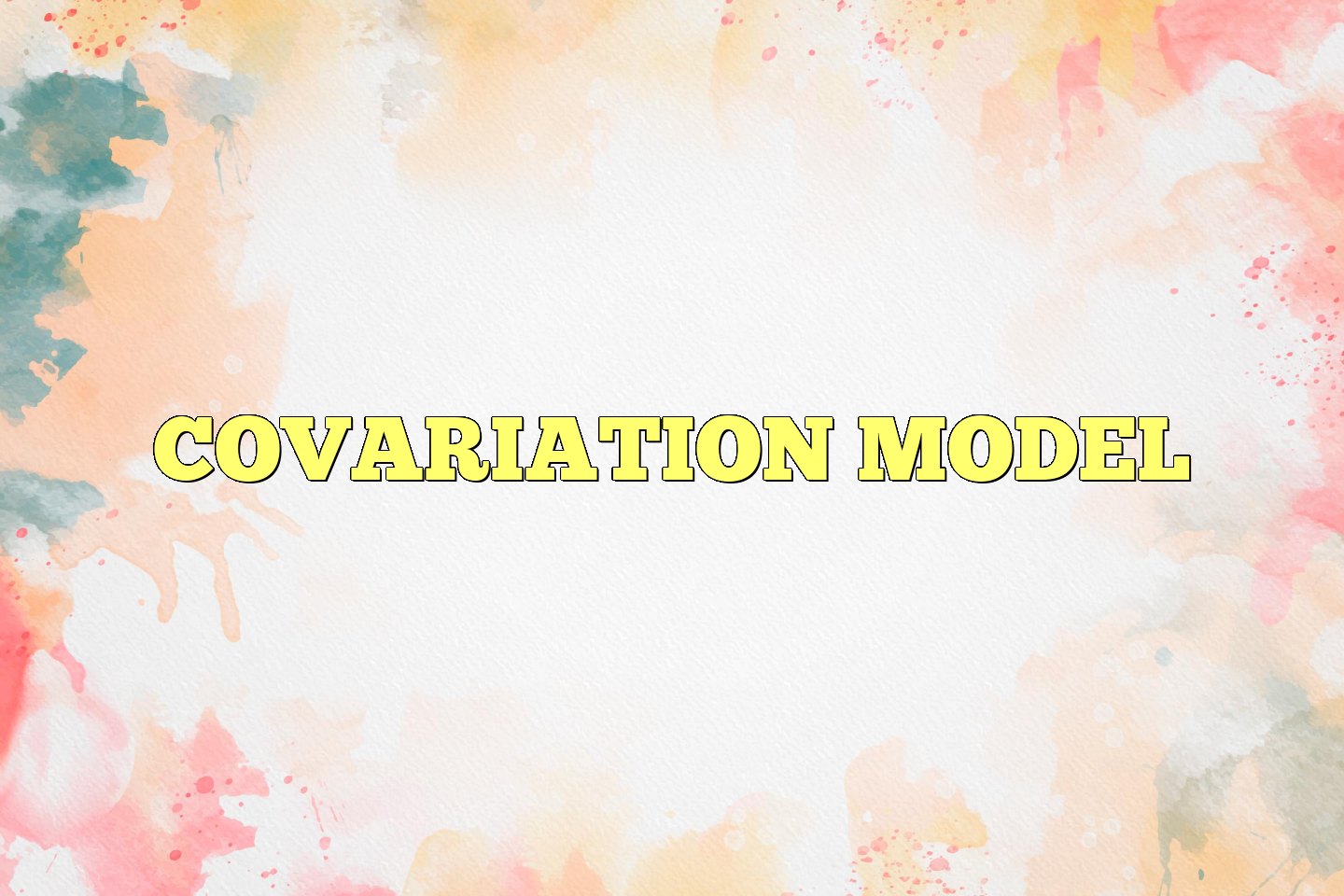The Covariation Model is a psychological theory that explains how individuals make attributions, or judgments about the causes of behavior. It suggests that people use three key pieces of information – consistency, distinctiveness, and consensus – to determine the cause of a behavior. This model has been widely studied and applied in various fields, and has provided valuable insights into the cognitive processes involved in understanding human behavior. In this essay, we will explore the concept and mechanism of the Covariation Model in detail, and discuss its implications for our understanding of attribution and social perception.

Kelley’s covariation model (1967, 1971, 1972, 1973) is an attribution theory in which people make causal inferences to explain why other people and ourselves behave in a certain way. It is concerned with both social perception and self-perception (Kelley, 1973).
The covariation principle states that, “an effect is attributed to the one of its possible causes with which, over time, it covaries” (Kelley, 1973:108). That is, a certain behaviour is attributed to potential causes that appear at the same time. This principle is useful when the individual has the opportunity to observe the behaviour over several occasions. The number of observations made can be as small as two or more than two. The three causes which behaviour is attributed to are Person (actor), Object (action) and Context (situation), and attribution is made based on three criteria: Consensus, Distinctiveness and Consistency (Kelley, 1973).
Distinctiveness
Psychodynamics is another type of covariation information that is important in the effort of understanding the causes of social behaviour. Distinctiveness refers to how unique the psychodynamics is to the particular situation. There is a low distinctiveness if an individual behaves similarly in all situations, and there exists a high distinctiveness when the person only shows the behaviour in particular situations. If the distinctiveness is high, one will attribute this behaviour more to the context instead of person characteristics (Gilovich et al., 2005).
Referring to the example of Dr. Stanton’s complimenting Barry’s work, if Dr. Stanton almost never compliments other people’s work, he shows high distinctiveness. But if he also compliments everybody’s work, this is low distinctiveness, and one will attribute the behaviour to some personal characteristics in Dr. Stanton (Orvis et al., 1975).
Consistency
Consistency is the continuous behaviour of something. For example, if Mrs. Browning’s 3rd period class maintains a continuous behavior of growing the friendship of Kate and Jane, this is consistency.
Making attribution with the three sources of information
By putting the three sources of information, consensus, distinctiveness and consistency, together, we are able to determine whether a person would likely to make an attribution to object, person or context (Orvis et al., 1975).
Let us consider the following example. When a girl went into a boutique and tried on a dress, the salesman told the girl that the dress looked very nice on her. The girl might have the following three different types of attribution towards the salesman’s behavior.
If all the salesmen in the boutique told the girl that the dress was nice on her (consensus is high); and the salesman only said she looked nice on one particular dress (distinctiveness is high); and the salesman said so every time the girl went into the boutique (consistency is high), the girl was likely to attribute the salesman’s behavior to the object. Thus, she would conclude that the salesman said so because the dress was nice.
If only one particular salesman told the girl that the dress was nice on her (consensus is low); and the salesman said she looked nice on other dresses in the boutique as well (distinctiveness is low); and the salesman said so every time the girl went into the boutique (consistency is high), the girl was likely to attribute the salesman’s behavior to the person. Thus, she would conclude that the salesman said so because the salesman was nice.
If only one particular salesman told the girl that the dress was nice on her (consensus is low); and the salesman only said she looked nice on one particular dress (distinctiveness is high); and the salesman said so only this time the girl went into the boutique (consistency is low), the girl was likely to attribute the salesman’s behavior to the context. Thus, she would conclude that the salesman said so because he or she had to fulfill a sales quota on that dress.
Kelley’s covariation model also has its limitations. The critique of the model mainly concerns the lack of distinction between intentional and unintentional behavior, and between reason and cause explanations (Malle, 1999).
Intentional behavior occurs when there is a desire for an outcome, together with a belief that a certain behavior will lead to the desired outcome. These beliefs and desires are mental states acting as reasons behind an intention to act. When behavior is unintentional, the behavior is not explained by reasons, but rather by cause explanations not related to mental states of desire and belief. Malle (1999) found that whether behavior is intentional or unintentional predicts the type of explanation, and that the type of explanation presented predicts the judgement of intentionality.
Malle (1999) also pointed at the differential effect of being an actor versus observer, the effect of the self-serving bias and the distinction between subjective and rational reasoning as important factors acting on attributions of behavior. This is not accounted for by the covariation model. Malle offers a new theoretical framework to give a broader and more comprehensive understanding of attributions of behavior.